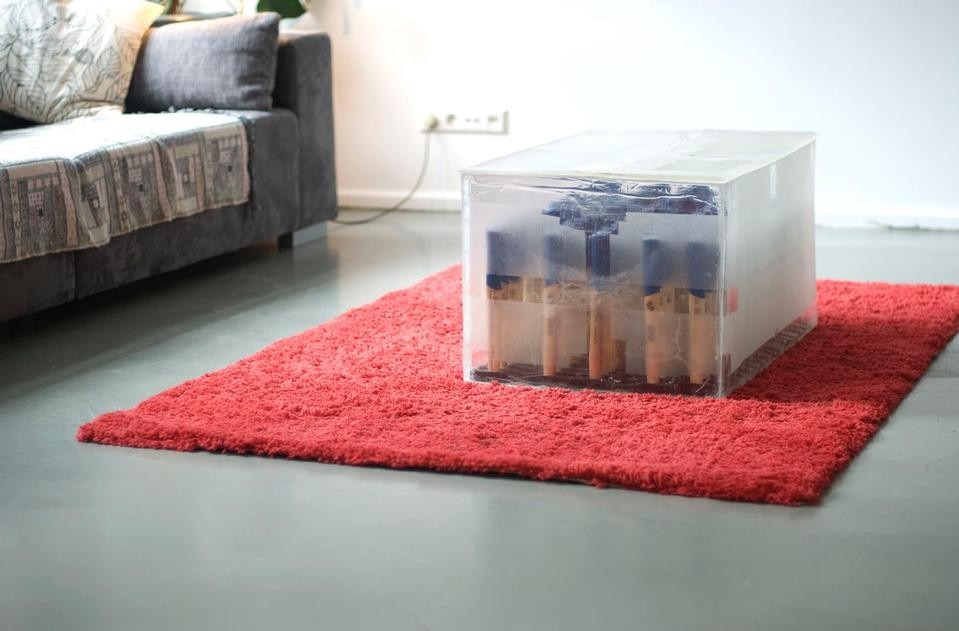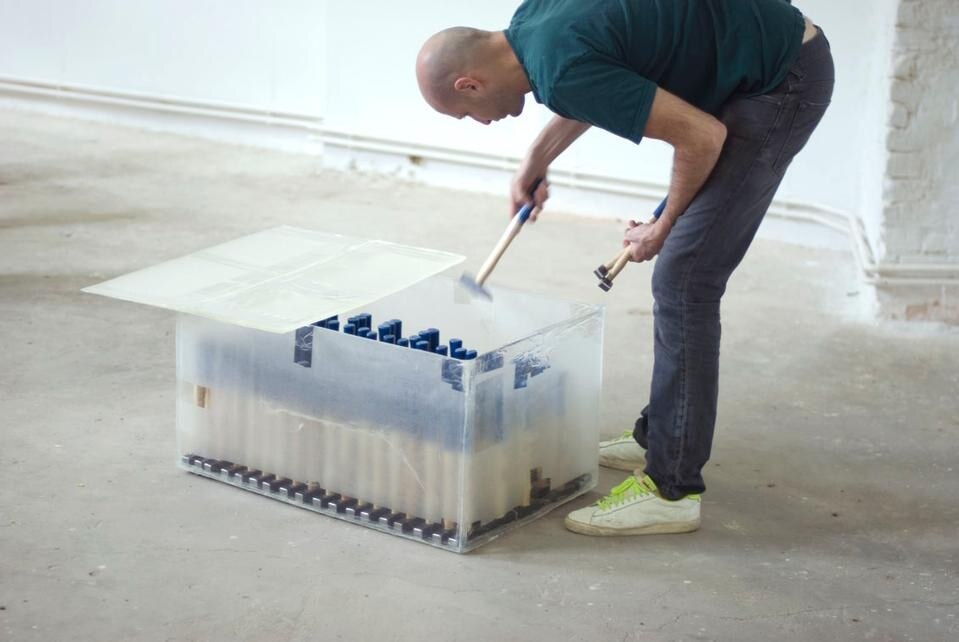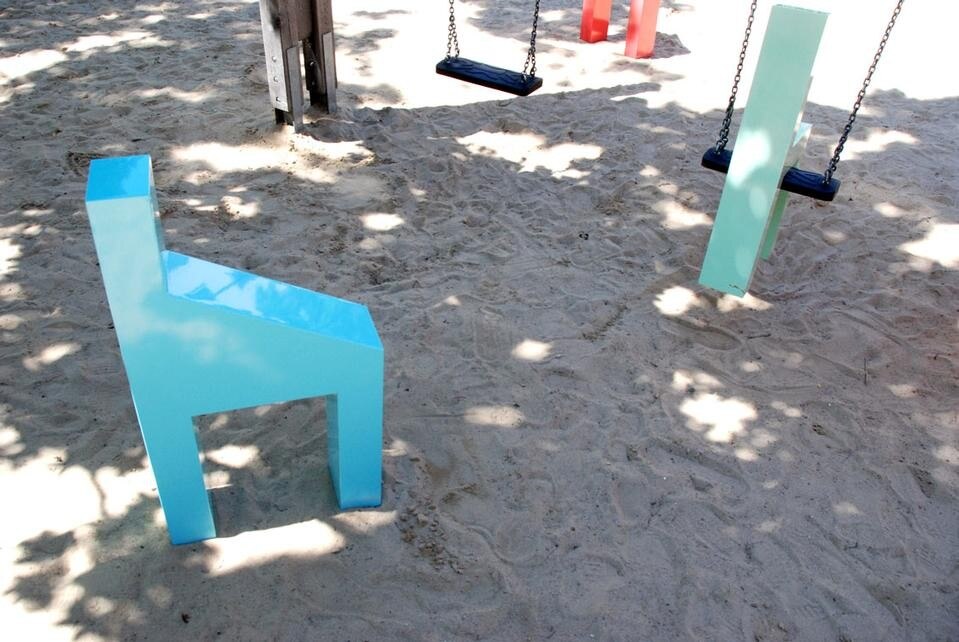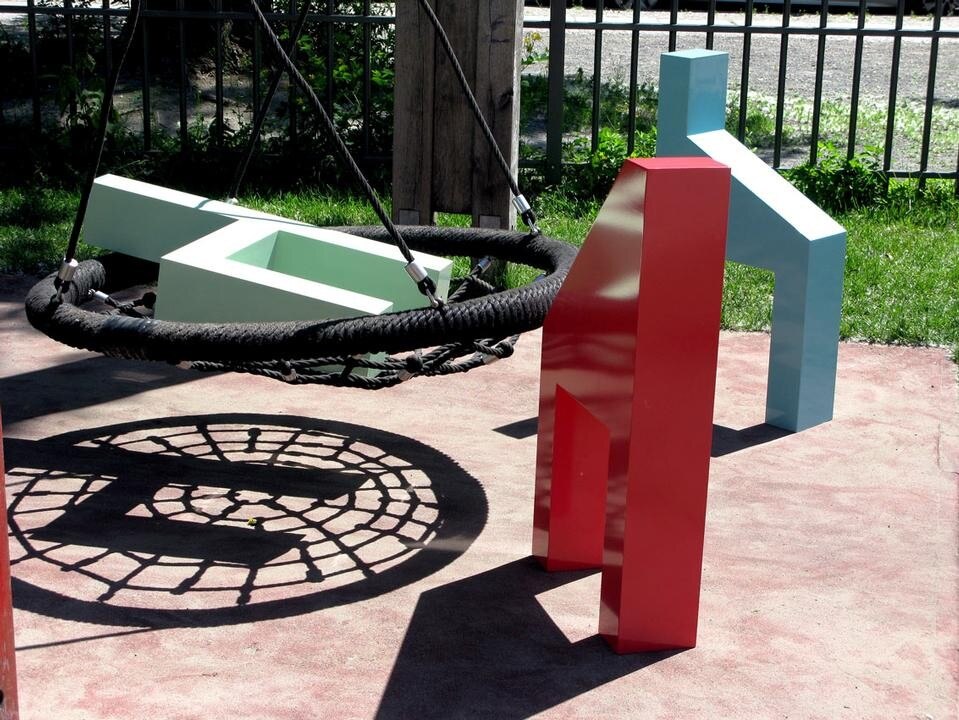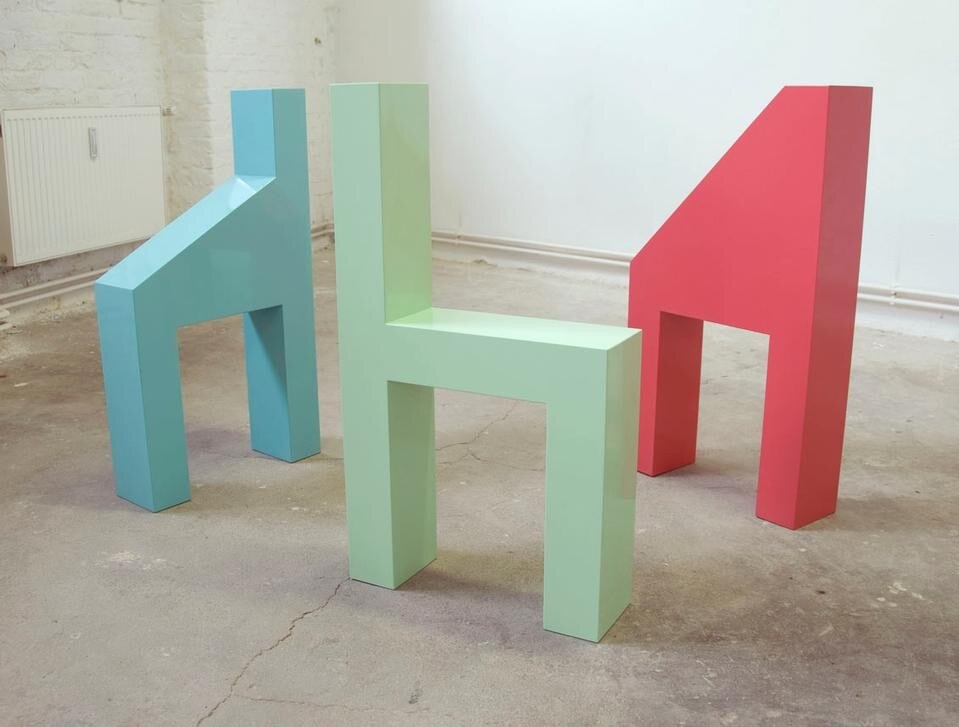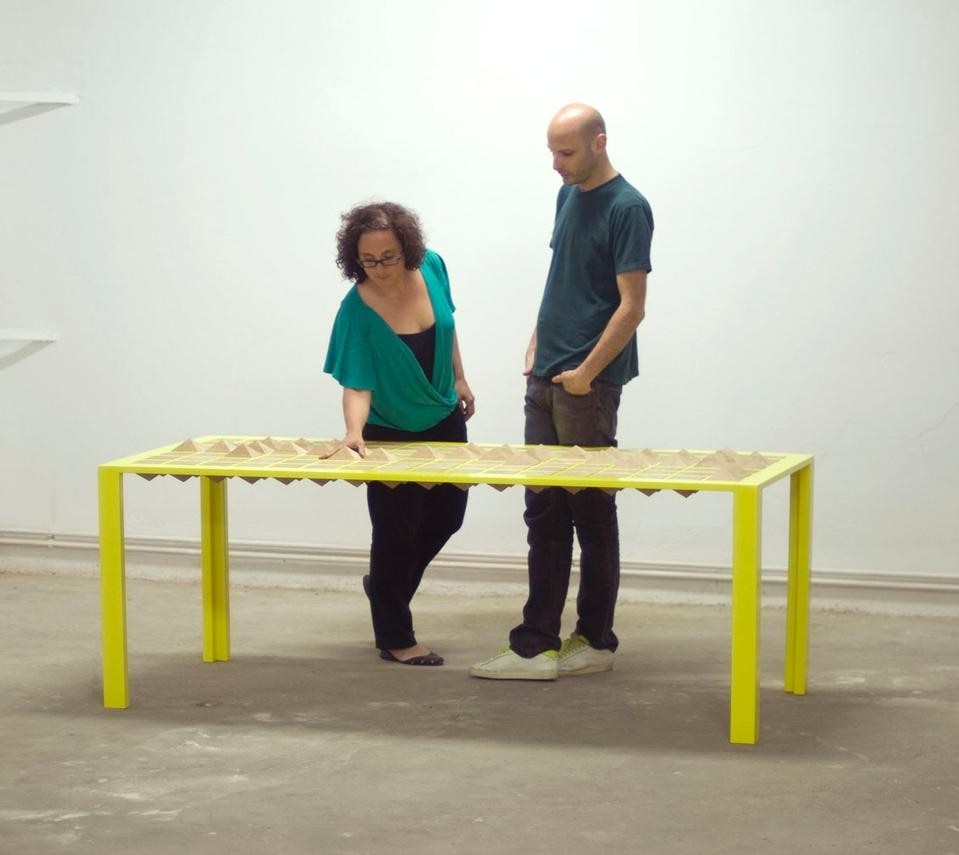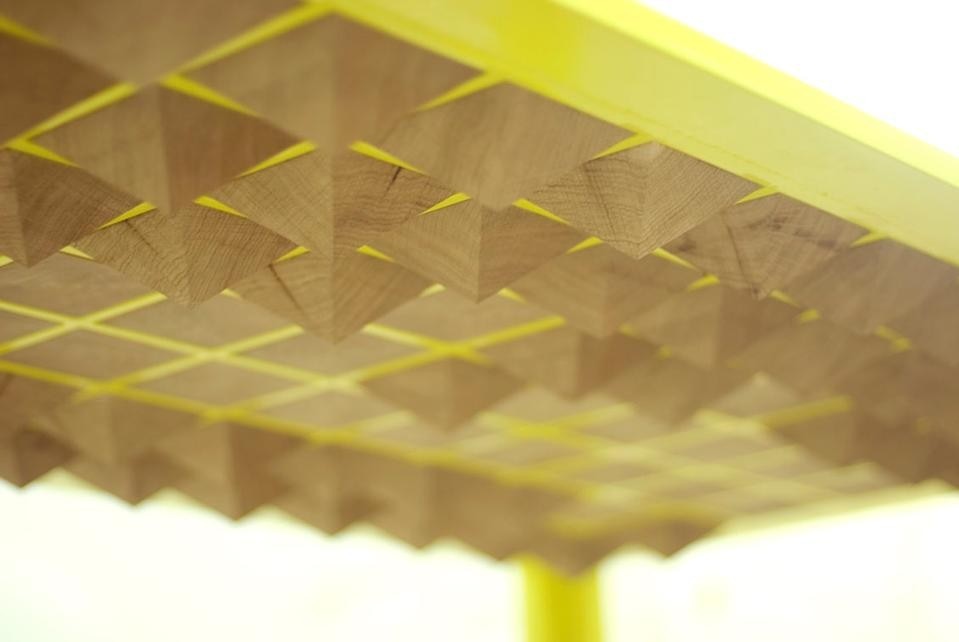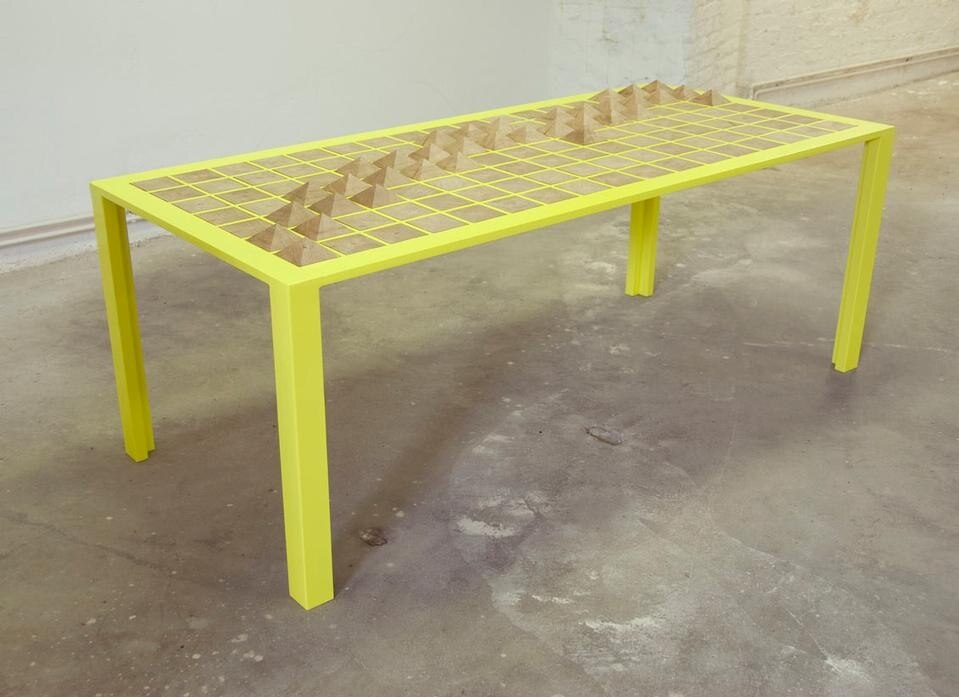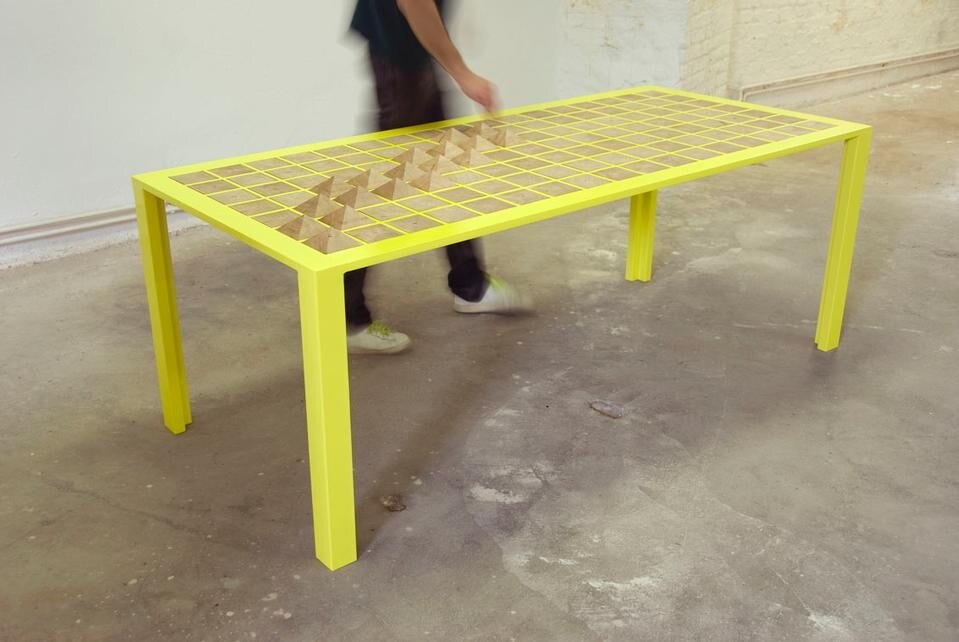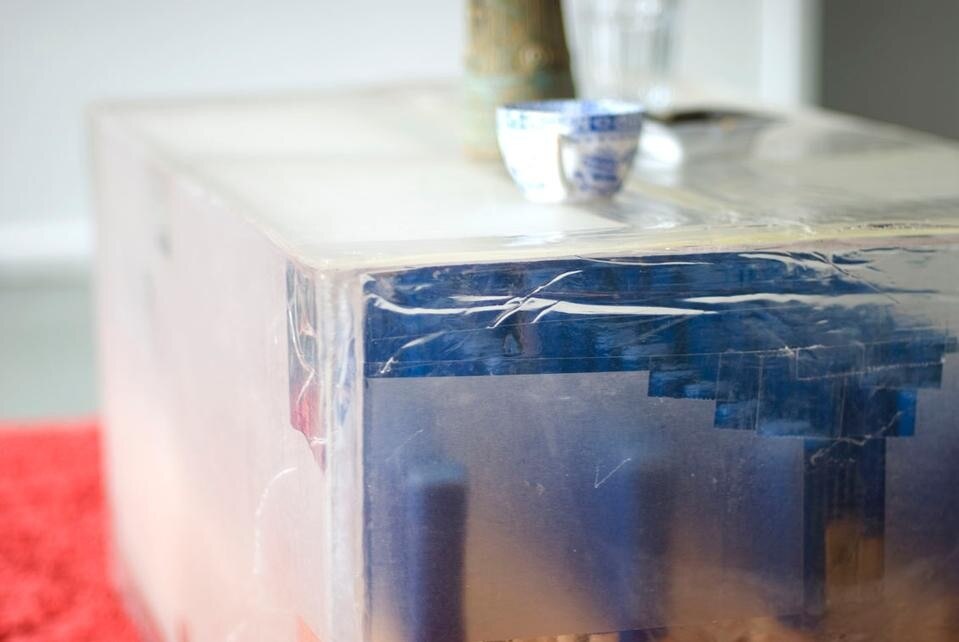This year, Ambra Medda chose them as “Designers of the Future”, taking them with her to the Milan Furniture Fair and Art Basel. They may have amazed us with an optical installation in Milan but they appeared in Basel with a far more experimental reflection on the state of contemporary design, or rather the (physical) circulation of ideas and creativity in the Internet era. What happens when a work of art (or design) arrives at a border? Even more crucially, should it be stopped at customs and taxed like commodities?
For their latest project, Taxing Art, presented for Design Miami in Basel, Eyal and Michele built three objects, intentionally borderline between art and design, with a deliberate wish to engage customs officers on the border between Germany and Switzerland: a translucent box/coffee table filled with hammers (Box of Loose Hammers), a sculpture/chair (Chanimals) with an almost anthropomorphous shape and a table/sculpture (T228/89) that, when swiped with the hand, reveals 119 revolving pyramids.
The experiment was a success and Beta Tank declare themselves satisfied: “We did not get stopped at the border but on the second day of the exhibition customs came around looking for our clearance papers. It was hard to engage them in a deep conversation as they wanted to move on but eventually one of the customs officers declared all the objects are art!” The reason? Because they were destined for a fair that was called Art Basel. The force of words you could say. “Whilst their visit was a surprise we still managed to take pictures and received a clearance stamp from the authorities. There is a Swiss rule which states that if the artist travels with his own art it is exempt from duty...”. Another three exhibitions are planned for the coming months (Barcelona, Istanbul and New York) for as many reflections on the theme. “The intention is to collect papers, attitudes and stamps and comments as they travel”. The project should end with a book summarising the various experiences. Elena Sommariva
